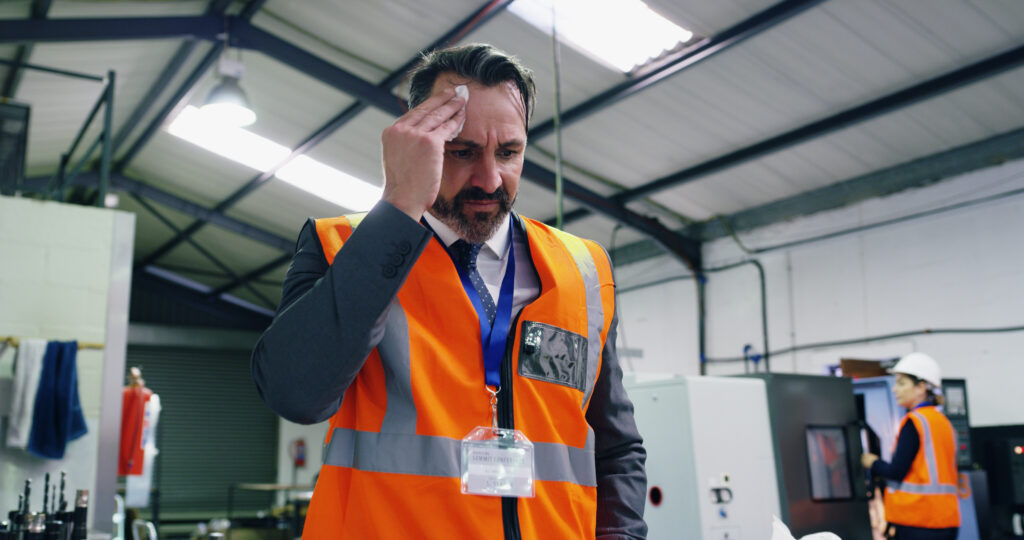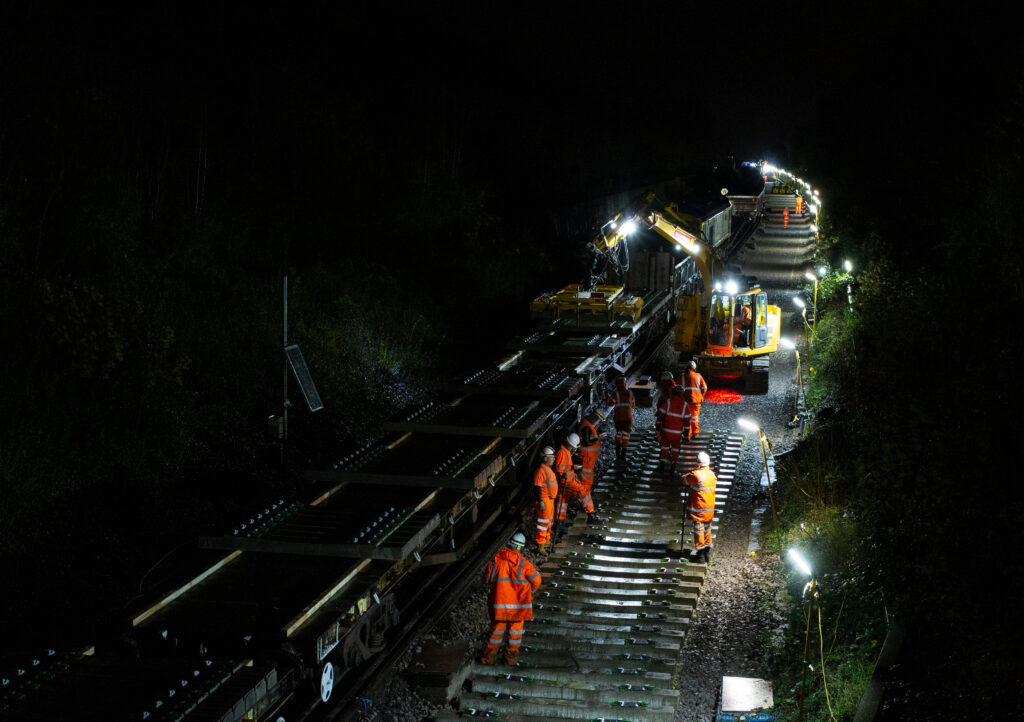All rail staff face a significant challenge in managing fatigue. The nature of the work means staff often work irregular hours or long shifts and need to stay alert and focused for extended periods of time. Staying on top of your game is vital in the workplace, but in some roles fatigue can be deadly. Imagine battling tiredness while driving a train, working on the track, or keeping track of signals.
Fatigue management is a recognised challenge for the rail industry. Being fatigued can significantly impair a person’s ability to perform tasks safely and effectively, leading to errors and accidents. In rail, this can lead to severe consequences, such as train accidents, derailments, and other incidents that put the safety of workers and passengers at risk.
While fatigue has been a concern for the industry for decades, it was only seriously accepted as a hazard following the Clapham Junction rail crash in 1988. The accident resulted in 34 deaths, with 484 injured. Clapham resulted from a signal failure caused by a wiring fault introduced when new wiring was installed. An independent inquiry found that the signalling technician responsible had performed the work during his 13th consecutive seven-day work week and was critical of British Rail’s Health and Safety culture at the time. Since then, steps have been taken to manage the problem.
What is fatigue?
While it’s tempting to associate fatigue with simply being tired, this isn’t exactly the case. “There isn’t really one single accepted definition of fatigue, says Anna Vereker, principle human factors specialist at the Rail Safety and Standards Board (RSSB). “The definition we use at RSSB is: a state of weariness due to working for too long working against our body clock, heavy physical or mental workload, insufficient rest, or inadequate sleep.
“There’s definitely an element relating to sleep, but we also recognise the elements around both workload and environmental factors. If it’s been a really hot summer for example, that’s going to be extremely fatiguing to someone sitting in a drivers cab or working on the track. And during hot weather, for example, we also need to take into account other factors such as high humidity.”

External factors are also not entirely to blame. In the case of shift or night working, our body clocks are a contributing factor, says Anna. “Humans are diurnal – we’re generally programmed to be doing things during the day. we’re just not wired to be at our most alert during the middle of the night. Anytime that we want staff perform productive, safety critical work, during the night, we need to think about how best to manage that.
Signs and symptoms
As well having a rather broad definition, one of the factors which makes fatigue so dangerous is that it is difficult to measure. The effects of serious fatigue can be compared to being over the drink driving limit and include poor judgement, slow reactions, poor memory, and impaired vision. But those who are getting close to this point might miss the initial warning signs.
“We are generally quite bad at understanding fatigue,” says Anna. “It’s not something that’s easy to capture yourself – it’s likely to be something that is first picked up by someone you work with. Of course, anytime you notice that you are yawning or not feeling quite as alert, or if you’re making small mistakes or misremembering things – those are all signs of fatigue. If any of those things occur, it’s probably time to think about what your body’s telling you.”
It doesn’t help that fatigue can effect us very quickly, for example if you’re doing intensive manual work, or can creep up on us very slowly if, for instance, you’re losing an hour of sleep on a regular basis. Either way, being aware that fatigue is becoming an issue is the first step towards combatting it, so it is vitally important to look out for the warning signs.
You may be more susceptible to the effects of fatigue if you have particular stressors elsewhere in your life. It can be a greater issue for people of a specific age or at different stages of your life. If, for instance, if you have young children or elderly relatives to care for, that physical and mental load can make fatigue in the workplace much more likely. Similarly, if you have problems on your mind, or are living through a stressful event, it all adds up. Making your employer or manager aware of these kinds of issues makes it easier to develop a plan.
“Approaching your manager and simply saying ‘Hey, this is where I’m at right now’ opens up the conversation,” says Anna. “From there, you’ll discover there are steps that can be taken to support you. There may be options to move shifts around. You may be able to take on lighter tasks until you’re more rested. It’s worth engaging with your colleagues at work. If they’re aware you’re going through a tough time, they’re more likely to look out for you and let you know if you don’t seem to be on form.”
Joint responsibility
That said, it is not the sole responsibility of individual staff members to manage their own fatigue.
“It’s definitely a joint responsibility between employees and companies,” says Anna. “The industry has an ethical responsibility to do the best by its staff and get the best out of them while giving them the best options.”
All employers have general duties under the Health and Safety at Work Act and the Management of Health and Safety at Work Regulations to control risks from fatigue. And now that it is acutely aware of the associated risks, the rail industry has implemented several measures to help manage it. One of the most recent is Network Rail’s Fatigue Risk Management Standard (NR/L2/OHS/003), which provides guidance for managing fatigue and outlines the responsibilities of employers and employees in identifying and addressing fatigue risks.
To reduce fatigue risk to an acceptable level, the regulations encourage managers and site staff to consider fatigue risk at all times throughout a shift, taking into account total hours worked – including site and commute times.
Employers can take a number of steps to address the problem. The RSSB recommends companies establish a robust fatigue management system which includes fatigue reporting. Companies are encouraged to create a culture where staff are encouraged to report their concerns.
Data from workers’ schedules, shift patterns, and other factors to assess fatigue risk levels and develop strategies to manage them are included in the consideration of the system. Fatigue management strategies can include measures such as shorter shifts, longer rest periods, and regular breaks.

Those responsible for designing rosters, need to predict fatigue risk and plan accordingly, following simple rules like rotating forward from early to late shifts (not backwards). For example, Network Rail has previously worked with the RSSB to specifically look at how to reduce the impact of fatigue for employees undertaking their first rostered night shift.
In addition to these measures, the industry is also exploring new technologies and innovations to help manage fatigue. For example, wearable devices that monitor workers’ physiological responses and alertness levels can provide real-time data on fatigue risks. This data can then be used to adjust schedules, provide additional breaks, or take other measures to reduce fatigue risks.
Many companies are taking proactive measures to mitigate the risks, including those that were found wanting in the past. Following the 2016 Sandilands tram accident, which resulted in seven fatalities and was linked to driver fatigue, the tram operator Tram Operations Limited (TOL) overhauled its fatigue management system. TOL introduced optimised rosters, installed fatigue detection technology in driver cabs, and rolled out a comprehensive education package for its staff, which covered how to talk to family members about the importance of undisturbed sleep for shift or night workers. The firm is now held up as an example for fatigue management best practice.
An ongoing battle
Managing fatigue risk in the UK railway industry is a constant challenge that requires the commitment and cooperation of employers, workers, and industry stakeholders. By implementing robust fatigue management systems, providing training and education, and exploring new technologies and innovations, the industry can help ensure the safety and well-being of its workers and passengers.
But the fight against fatigue will always be an ongoing battle. No matter what new technologies or legislation are introduced, and despite the continual roll out of education and training programmes, human nature makes fatigue a risk that will always be present, says Anna.
“We regularly ask people to work on safety critical jobs at times that are not optimal, and that has potential safety consequences for the travelling public, and people who interact with rail as well as the people who work there. Fatigue is not an issue that we can ever solve – it will always be something we have to manage.”
Image credit: Istockphoto.com / Network Rail

